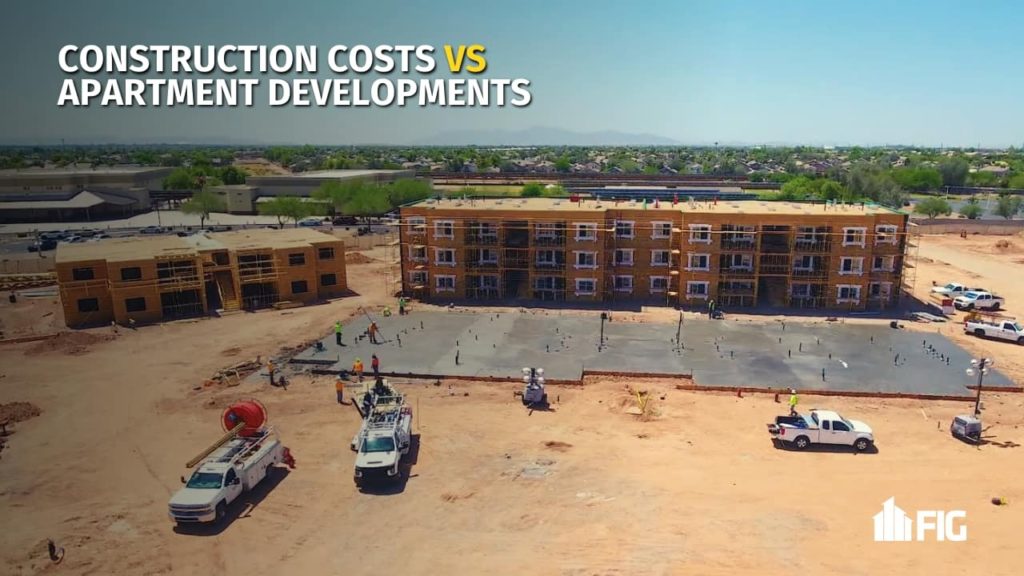
A recent study by the Chicago construction firm, Skender, lays out the changes in construction costs over the last year. These trends point out just how bad it’s gotten for both builders and investors as costs for buying/building multifamily continue to go up.
Inflation has shot up to historic levels, and everyone in the industry is starting to feel it. Some of the highest rises in material costs are shown here:
Gasoline & Asphalt
+143.2% (April 2020-April 2021)
Lumber
+89.7% (April 2020-April 2021)
Steel Products
+70% (April 2020-April 2021)
In a recent interview with CoStar, a project executive with Skender discussed the following, “The pandemic supercharged the cyclical nature of the cost of commodities used in the housing and construction market, leading to record-high pricing for materials such as softwood lumber and steel for multiple consecutive months this year.”
“Pent-up demand for raw materials built up in 2020 as mills and factories shut down, stopping production and decreasing overall supply. Meanwhile, demand increased for larger homes as many remote employees no longer needed to stay in smaller apartments near offices and developers kicked off a flurry of construction projects to address housing shortages around the nation.”
What have we seen as a result? Home prices continue to soar across the country. Especially as key metros in the Intermountain West provide flourishing markets for businesses to start, grow, and relocate to.
Millennials continue to opt for housing options that are more affordable and include flexible amenities. This is one of the reasons why some of the larger, master-planned multifamily communities have done so well in recent years. As apartment demand skyrockets, new build-to-rent communities providing all of the in-house desired amenities (clubhouse, smart home package, pools, etc) can’t seem to keep up with the demand.
“Nationally, multifamily rents are growing at a pace that would equate to the strongest apartment rent gains this century if maintained throughout the year” – CoStar
National apartment vacancy rate: approx. 6% (stronger than the market’s pre-COVID levels according to a CoStar report)
The way these rental trends are going, a lot of boxes are being checked off for investors seeking a new construction fourplex, triplex, or duplex. Only problem? These unforeseen increases in construction costs combined with labor markets struggling with unemployment and an increased difficulty to fill jobs have made things a little bit trickier to pull off for developers. Company’s like ours need to look to the markets that fared well through the COVID lockdowns and have a strong economic footprint that has been the hallmark of FIG multifamily projects in the past.
“The rising cost of lumber alone added nearly $13,000 to the market value of multifamily units, translating to renters paying an average of $119 per month more to rent a newly built apartment.”
“The lumber shortage had caused the average single-family home price to rise by $35,872.” – National Association of Home Builders
Causes of the Material Shortages
- Backlog in material production brought about by the pandemic.
- The drastic increase of home construction & DIY projects from both before the pandemic, but also as more and more people stay at home and start up new projects. Lumber continues to fly off of shelves as soon as they come in.
- Strong demand for new homes and commercial projects. Strong rates and growing markets have long outpaced the supply. The sheer amount of raw materials needed to build new homes has also led to the backlog of materials.
- Steel mills were extremely slow to ramp back up to pre-pandemic production levels.
